RogueRose
International Hazard
    
Posts: 1585
Registered: 16-6-2014
Member Is Offline
|
|
Lead Acetate soaked filter dissolved Al foil & grew coral like crystals
So I needed a place to set a wet filter of lead acetate (cellulose filter) so I set it on a few layers of Al foil. I came back a day later and
noticed strange "crystals" growing out of the filter and some lying around it. They looked a lot like small corals growing from the filter.
I looked at aluminum acetate and it seems that it doesn't form from acetic acid alone and was figuring that the lead had to be displaced with the Al
somehow but I'm not sure what or why these little pillars are or why they formed. None of the other filters did this so it seems unique to being
placed upon the Al foil.
I also tried adding some of the acetic acid & H2O2 solution to the foil and it didn't do much but leave a very small black dot in the center of
the drop of liquid, so it seems that Al2O3 was formed from the mix?
I haven't tried adding Al to a solution of lead acetate (yet) but is this known to dissolve it and would it leave pure lead behind or would something
else be left such as an oxide of some sort?
[Edited on 2-15-2018 by RogueRose]
|
|
|
aga
Forum Drunkard
    
Posts: 7030
Registered: 25-3-2014
Member Is Offline
|
|
A Photo would help.
|
|
|
DraconicAcid
International Hazard
    
Posts: 4278
Registered: 1-2-2013
Location: The tiniest college campus ever....
Member Is Offline
Mood: Semi-victorious.
|
|
I would expect it to be metallic lead from a displacement reaction.
Please remember: "Filtrate" is not a verb.
Write up your lab reports the way your instructor wants them, not the way your ex-instructor wants them.
|
|
|
RogueRose
International Hazard
    
Posts: 1585
Registered: 16-6-2014
Member Is Offline
|
|
Here they are. The "crystals" look like very small coral and they are soft and mushy and fall off very easily. the filter is still pretty moist, so
I'm sure they are drawing moisture from it.
I didn't have my camera before and didn't want to turn it over b/c the growths fall off so easily. The bottom color looks very much like lead, though
it could be Al that has adhered to the filter.
I've tried adding some Al to three different solutions of PbOAc and acetic acid and H2O2 to see if it replicates.
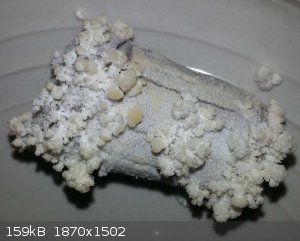 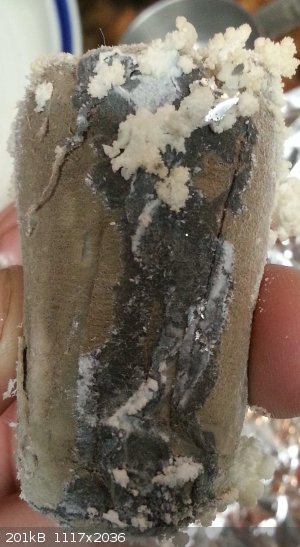 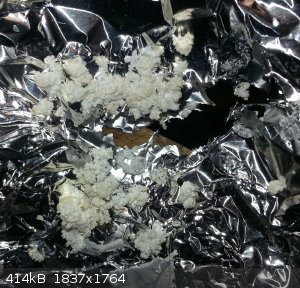
|
|
|
aga
Forum Drunkard
    
Posts: 7030
Registered: 25-3-2014
Member Is Offline
|
|
Awesome !
|
|
|
RogueRose
International Hazard
    
Posts: 1585
Registered: 16-6-2014
Member Is Offline
|
|
The reason I'm wodnering is because it seems that aluminum triacetate isn't easily made from straight Al without acetic anhydride so if it does make
the triacetate, that could be interesting as it seems that AA can be distilled from this.
|
|
|
RogueRose
International Hazard
    
Posts: 1585
Registered: 16-6-2014
Member Is Offline
|
|
So I did a test with 3 test tubes, one with vinegar and H2O2, one with solid lead acetate crystals after drying/evaporating & one with a solution
of lead acetate before it was boiled down though I don't know how concentrated it is, probably about 80% saturated at room temp.
I put about 3ml in each test tube and placed a small ball and strip of Al foil, about 4cm x 4cm total size in each tube, and allowed it to sit.
Eventually the tube with the solution started to produce very beautiful crystals of what can only be lead and it looks like it might be a way to make
a Tree of Saturn without using Zinc (and shape the tree using Al foil!). The tube with the vinegar and H2O2 did dissolve some of the foil it seems or
it precipitated lead, it is difficult to tell though when I first noticed particles in the solution, I did see some flakes, not a fine powder.
So I am wondering if this could be a route of making Aluminum diacetate or possibly the triacetate, which seems like it may be somewhat difficult to
make without acetic anhydride. The Wiki does show that it can be made by a aluminium sulfate solution mixed with lead acetate, giving the Al
triacetate and PbSO4.
I'll have to try this with a larger amount so that I can dry the result and determine if it is the di or tri acetate.
Here are some pics of the pure lead crystals growing and the Al foil dissolving (or at least I think it is the foil dissolving).
Here are some pictures of what is happening.
These are as I spun the test tube
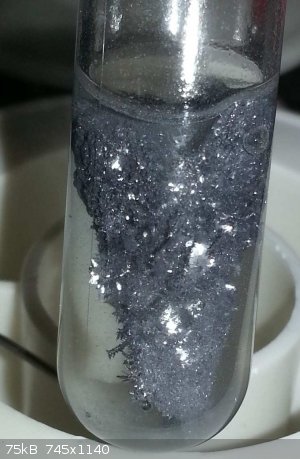 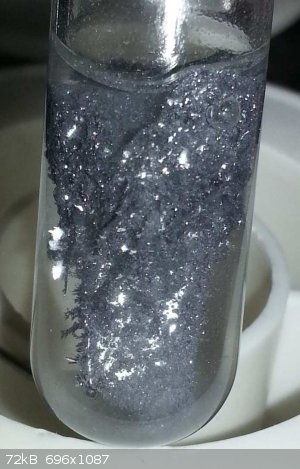 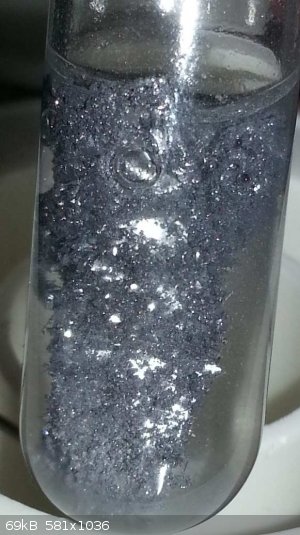 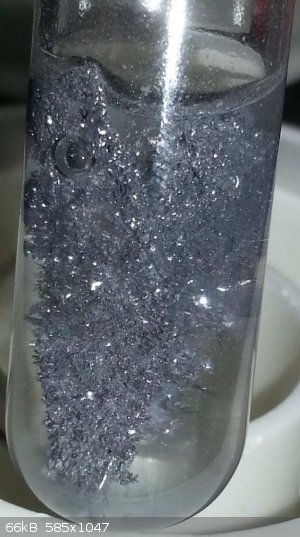 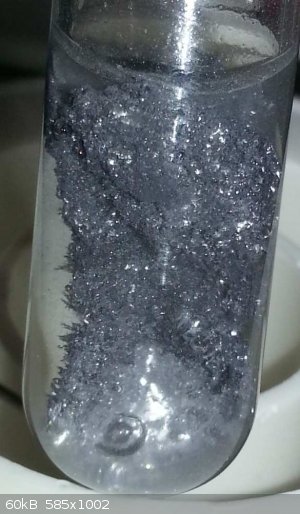
vinegar & H2O2 solution
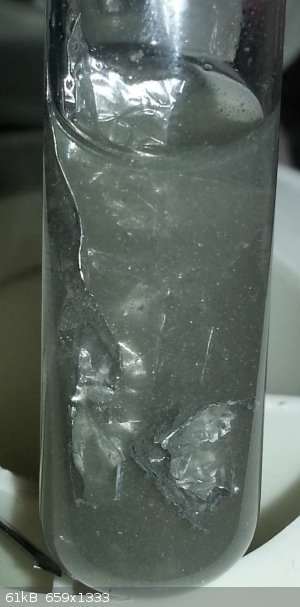 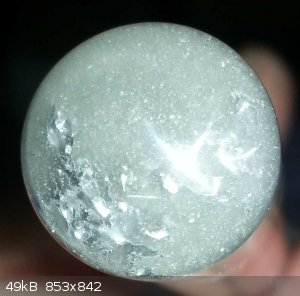 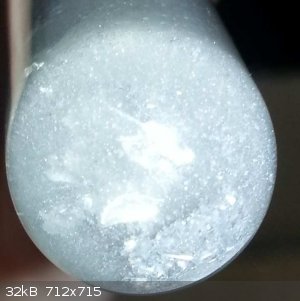
[Edited on 2-16-2018 by RogueRose]
|
|
|
Diachrynic
Hazard to Others
  
Posts: 219
Registered: 23-9-2017
Location: western spiral arm of the galaxy
Member Is Offline
Mood: zenosyne
|
|
Quote: Originally posted by RogueRose  |
So I am wondering if this could be a route of making Aluminum diacetate or possibly the triacetate, which seems like it may be somewhat difficult to
make without acetic anhydride. The Wiki does show that it can be made by a aluminium sulfate solution mixed with lead acetate, giving the Al
triacetate and PbSO4.
I'll have to try this with a larger amount so that I can dry the result and determine if it is the di or tri acetate.
|
Great pictures!
Reading Wikipedia it seems that aluminium triacetate hydrolyzes with water - so, maybe it is already decomposed into aluminium diactetate?
Also, could the double displacement also work with calcium acetate? The sulfate would leave the acetate in solution, I guess. That is just speculation
though.
we apologize for the inconvenience
|
|
|
RogueRose
International Hazard
    
Posts: 1585
Registered: 16-6-2014
Member Is Offline
|
|
Quote: Originally posted by Diachrynic  | Quote: Originally posted by RogueRose  |
So I am wondering if this could be a route of making Aluminum diacetate or possibly the triacetate, which seems like it may be somewhat difficult to
make without acetic anhydride. The Wiki does show that it can be made by a aluminium sulfate solution mixed with lead acetate, giving the Al
triacetate and PbSO4.
I'll have to try this with a larger amount so that I can dry the result and determine if it is the di or tri acetate.
|
Great pictures!
Reading Wikipedia it seems that aluminium triacetate hydrolyzes with water - so, maybe it is already decomposed into aluminium diactetate?
Also, could the double displacement also work with calcium acetate? The sulfate would leave the acetate in solution, I guess. That is just speculation
though. |
I'll have to take a look at the Wiki again, but I have some A(lSO4)3 and it is the hydrate (octadecahydrate or something 18 H2O!!). I dissolved some
and it leaves a couldy solution that I tried to filter and it still remains couldy, so it seems like it is related to the sulfate. I'd drying the
sulfate to anhydrous and have dries some of the lead acetate to anhydrous, so I'm hoping to try the reaction before too long.
I have found it very difficult to dehydrate the lead acetate to anhydrous using heat (oven) even using very small temp increases over a long time. I
took 100g of trihydrate in a ceramic dish, covered with Al foil & placed in oven at 225 for 2 hours, I increased temp by 10-15 degrees every hour
until 300 then allowed to sit for 4 hours. A film formed on top of the melted acetate so I mixed it all up, covered & replaced. Turned up to
320-325 and came back after 2 hours, still a little liquidy, replaced for 2 hours & found that some had gotten a brown tint (PbO2 I'm guessing).
The thing is that it decomp's at 200C (~400F). This is the 3rd time that I've gotten a brown tint and have done everything to insulate from hot spots
or direct heat - it is all slowly warmed and no hot spots on the dish.
Anyone know if this is to be expected? I'm thinking of trying heating under vacuum but can only do small samples at a time.
|
|
|